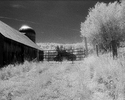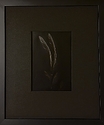Juan Valdenebro
Member
Hello RoiAny reason why xtol over say d76 or any other developer for that reason? I was looking at stand development for that specific roll of hp5 I had pushed 4 stops. Thoughts?
If your photographs are important, I'd say the best possible development in that case (HP5+400 underexposed at 6400) could be using Ilford's Ilfotec DD-X. Even with that developer, your negatives will be light years from a normal useable tonality for wet printing, and even for scanning they'll be poor. Honestly, some people would call all of it wasting materials... HP5+ can look great at 800 for overcast light, and at 1600 you can wet print it but all the qualities of the image structure (detail, sharpness, nice grain) are destroyed because of the underexposure: and that's after just two stops: two stops is wild pushing.
If you don't want to buy DDX, I'd use the TMaxDev, even though it was designed for pushing modern films.
Rodinal produces the worst look I've seen on HP5+.
For HP5+ I recommend you D-76 1+1, metering at 400.
All tales about stand development as a great procedure for pushing are untrue: wrong metering and/or scanning poor negatives for digital manipulation, reaching tonal situations that are not those of the film scanned.
Playing the game of very well exposed and very well developed film is a lot more fun! Hope you're enjoying that part too!
Have fun!






